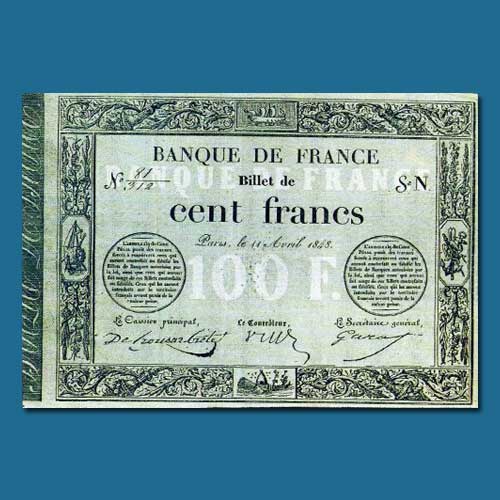The Second Republic of France’s Provisional Banknote
2020-03-12 Thu
The French Second Republic was a short-lived republican government of France under President Louis-Napoléon Bonaparte. It lasted from the 1848 Revolution to the 1851 coup by which the president made himself Emperor Napoleon III and initiated the Second Empire.The 1848 Revolution in France, sometimes known as the February Revolution, was one of a wave of revolutions across Europe in that year. The events swept away the Orleans Monarchy which was created after the Napoleonic Rule (1830–1848) and led to the creation of the nation's second republic.
The Second Republic witnessed the tension between the "Social and Democratic Republic” and a Radical form of republicanism. The Second Republic was criticized by Republicans for being insufficiently democratic. The republic laster for about 3 years and was dissolved on the night of 1/2 December 1851. Louis-Napoleon dissolved the Chamber, re-established universal suffrage allowing the democracy to take over.
In the year 1848, a provisional government with Louis Napoleon Bonaparte as elected president was organized. The legal tender of Banque de France banknotes was lifted in 1850 and finally restored in 1870. During the meantime, the Banque de France imposed provisional currency intended to resolve a monetary shortage.
The note was issued on 14th April 1848 in Paris. The note depicts an intricate design of vines and flowers with four different types of ships as a border. The denomination of cent francs – 100 francs – is in the center with the promissory notes on both left and right. The note also depicts signatures of three signatories at the bottom.
Image Courtesy: colnect.com
Latest News
-
Ghiyath Shah as Heir Apparent
2025-09-25 ThuGhiyath Shah was the ruler of the Malwa Sultanate, reigning from 1456 to 1500. From 1456 to 1469, he...
-
Malwa Sultan Mahmud Shah Silver Coins
2025-09-11 ThuMalwa Sultan Mahmud Shah minted silver coins in round and square flans. <br><br> For round coins,...
-
Malwa Sultan Mahmud Shah Billon coin
2025-08-26 TueMalwa Sultan Mahmud Shah's billon coins followed three weight standards: 100 rati, 96 rati, and 80 r...
-
Fascinating Archaeological Facts on Postage Stamps - 91
2025-08-23 SatRhinoceros is one of the oldest land mammal species existing in India. There are five species of rhi...
-
Fascinating Archaeological Facts on Postage Stamps - 90
2025-08-23 SatUthiramerur, a Village in Kanchipuram, Tamil Nadu, is notable for its Temple inscriptions that descr...

